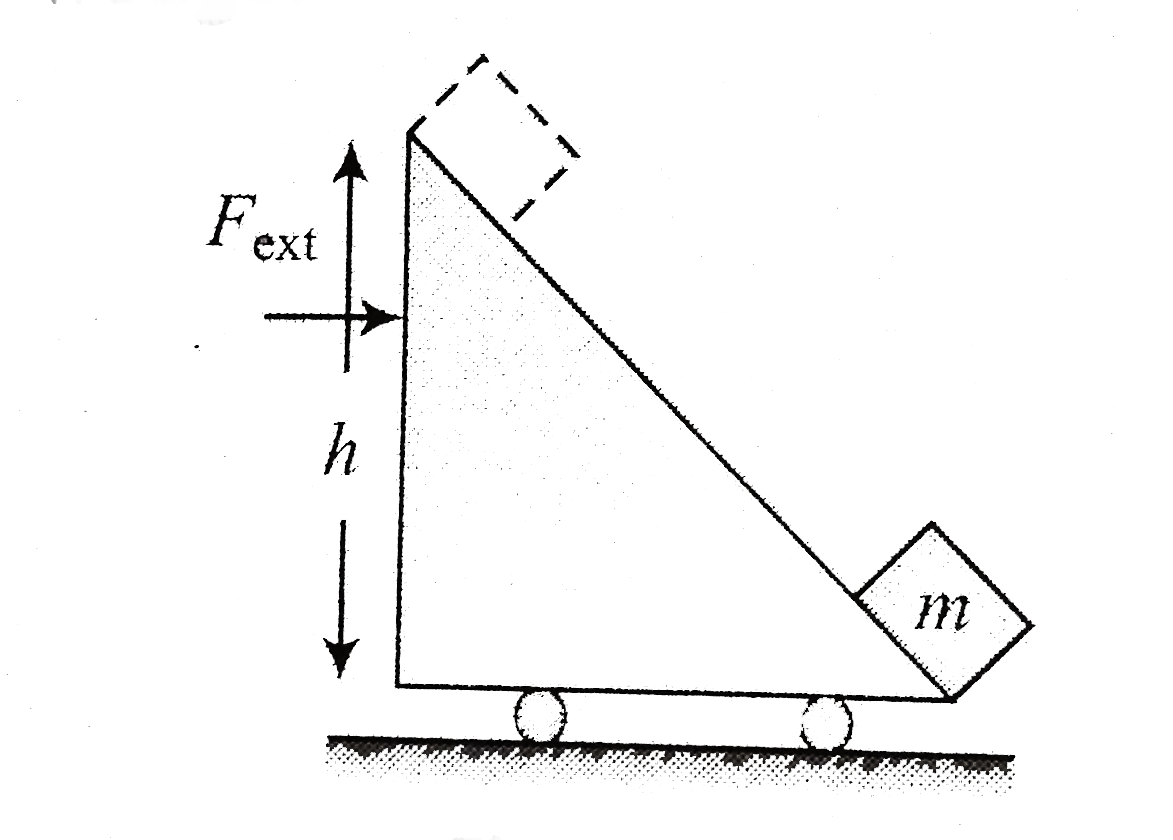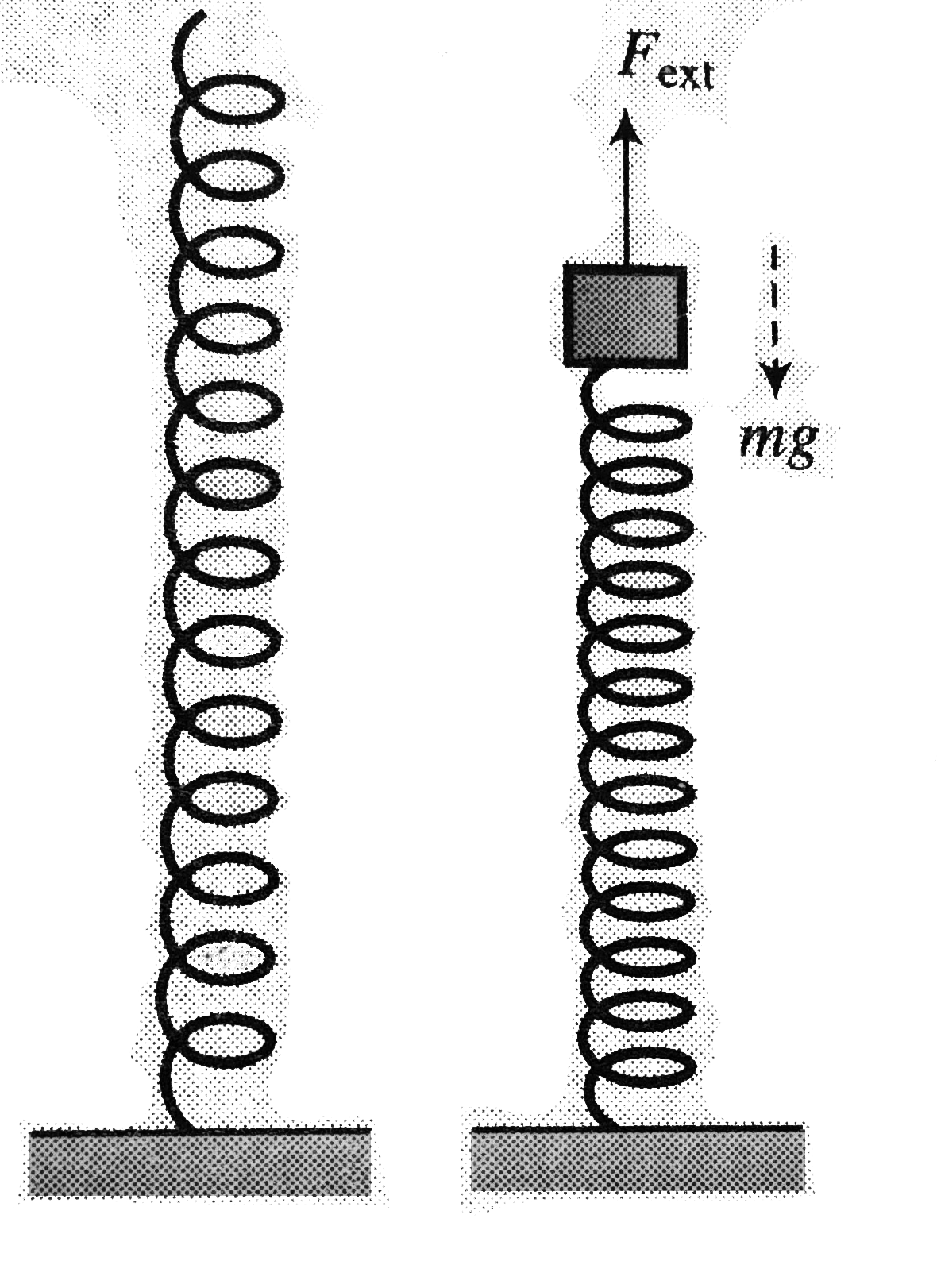An interesting analogy based upon energy density. Find the work done by external agent to filll the mass m in a sherical volume of Radius R. (You may takethe example of earth)
To find the work done by an external agent to fill a mass m in a spherical volume of radius R, we can follow these steps:
Step 1: Understand the Concept of Gravitational Potential Energy
The gravitational potential energy U between two masses m1 and m2 separated by a distance r is given by the formula:
U=−Gm1m2r
where G is the gravitational constant.
Step 2: Consider a Spherical Shell
To fill a sphere of radius R with mass m, we can consider adding mass in the form of thin spherical shells. Let's take a thin spherical shell of radius r and thickness dr.
Step 3: Calculate the Mass of the Shell
The volume dV of the thin shell is given by:
dV=4πr2dr
If the density of the material is ρ, then the mass dm of the shell is:
dm=ρdV=ρ(4πr2dr)
Step 4: Calculate the Potential Energy of the Shell
The potential energy dU of the shell due to the mass already present in the sphere can be calculated by considering the mass m already filled in the sphere of radius r:
dU=−Gm⋅dmr=−Gm⋅ρ(4πr2dr)r
This simplifies to:
dU=−4πGmρrr2dr=−4πGmρrdr
Step 5: Integrate to Find Total Potential Energy
To find the total potential energy U stored in the sphere, we integrate dU from r=0 to r=R:
U=∫R0−4πGmρrdr
Calculating this integral:
U=−4πGmρ(r22)R0=−4πGmρR22=−2πGmρR2
Step 6: Relate Mass to Density
The total mass m can be expressed in terms of density and volume:
m=ρ⋅43πR3⟹ρ=3m4πR3
Step 7: Substitute Density into Potential Energy Expression
Substituting ρ back into the expression for U:
U=−2πGm(3m4πR3)R2=−3Gm22R
Step 8: Work Done by External Agent
The work done W by the external agent to fill the mass m in the spherical volume is equal to the potential energy stored in the sphere:
W=−U=3Gm22R
Final Answer
Thus, the work done by the external agent to fill the mass m in a spherical volume of radius R is:
W=3Gm22R
---
The gravitational potential energy U between two masses m1 and m2 separated by a distance r is given by the formula:
U=−Gm1m2r
where G is the gravitational constant.
To fill a sphere of radius R with mass m, we can consider adding mass in the form of thin spherical shells. Let's take a thin spherical shell of radius r and thickness dr.
The volume dV of the thin shell is given by:
dV=4πr2dr
If the density of the material is ρ, then the mass dm of the shell is:
dm=ρdV=ρ(4πr2dr)
The potential energy dU of the shell due to the mass already present in the sphere can be calculated by considering the mass m already filled in the sphere of radius r:
dU=−Gm⋅dmr=−Gm⋅ρ(4πr2dr)r
This simplifies to:
dU=−4πGmρrr2dr=−4πGmρrdr
To find the total potential energy U stored in the sphere, we integrate dU from r=0 to r=R:
U=∫R0−4πGmρrdr
Calculating this integral:
U=−4πGmρ(r22)R0=−4πGmρR22=−2πGmρR2
The total mass m can be expressed in terms of density and volume:
m=ρ⋅43πR3⟹ρ=3m4πR3
Substituting ρ back into the expression for U:
U=−2πGm(3m4πR3)R2=−3Gm22R
The work done W by the external agent to fill the mass m in the spherical volume is equal to the potential energy stored in the sphere:
W=−U=3Gm22R
Thus, the work done by the external agent to fill the mass m in a spherical volume of radius R is:
W=3Gm22R
Topper's Solved these Questions
- ELECTROSTATIC POTENTIAL AND CAPACITANCE BOOK - AAKASH INSTITUTE ENGLISHCHAPTER - ELECTROSTATIC POTENTIAL AND CAPACITANCE EXERCISE - ASSIGNMENT (SECTION-A) Objective Type Questions (Only one answer)
53 Videos
- ELECTROSTATIC POTENTIAL AND CAPACITANCE BOOK - AAKASH INSTITUTE ENGLISHCHAPTER - ELECTROSTATIC POTENTIAL AND CAPACITANCE EXERCISE - SECTION-B (OBJECTIVE TYPE QUESTIONS (ONLY ONE ANSWER) )
1 Videos
- ELECTROMAGNETIC WAVESBOOK - AAKASH INSTITUTE ENGLISHCHAPTER - ELECTROMAGNETIC WAVESEXERCISE - ASSIGNMENT SECTION - D Assertion-Reason Type Questions
25 Videos
- GRAVITATION BOOK - AAKASH INSTITUTE ENGLISHCHAPTER - GRAVITATION EXERCISE - ASSIGNMENT SECTION - D (ASSERTION-REASON TYPE QUESTIONS)
15 Videos
Similar Questions
Find the workdone to move an earth satellite of mass m from a circular orbit of radius 2R to one of radius 3R.
View SolutionThe gravitational field in a region is given by →E=(10Nkg−1)(→i+→j). Find the work done by an external agent to slowly shift a particle of mass 2 kg from the point (0,0) to a point (5m,4m)
View SolutionA block of mass m is placed at the bottom of a massless smooth wedge which if placed on a horizontal surface. When we push the wedge with a constant force, the block moves up the wedge. Find the work done by the external agent when the block has a speed v and is reaches the top of the wedge.

View SolutionA particle of mass 'm' is raised from the surface of earth to a height h = 2R. Find work done by some external agent in the process. Here, R is the radius of earth and g the acceleration due to gravity on earth's surface.
View SolutionFind the work done by an external agent in lowering a block of mass m slowly on a fixed light spring of stiffness k, till it comes to rest.
View SolutionA block of mass m is slowly lowered from a point where it just touches a vertical fixed spring of stiffness k, till it remains stationary after the applied force is withdrawn. Find the work done by the external agent(a) in compressing the spring by a distance x and (b) bringing the block to its stable equilibrium position.

View SolutionA planet of mass M has uniform density in a spherical volume of radius R. Calculate the work done by the external agent to deassemble the planet in eight identical spherical part against gravitational pull amongst its constitute particle.
View SolutionFind the binding energy of a satellite of mass m in orbit of radius r, (R = radius of earth, g = acceleration due to gravity)
View SolutionFind out potential at P and Q due to the two point mass system Find out work done by external agent in bringing unit mass from P to Q Also find work done by gravitational force.
 .
.
View SolutionThe energy required to move an earth satellites of mass m from a circular orbit of radius 2 R to a radius 3 R is (R is radius of the earth)
View Solution
